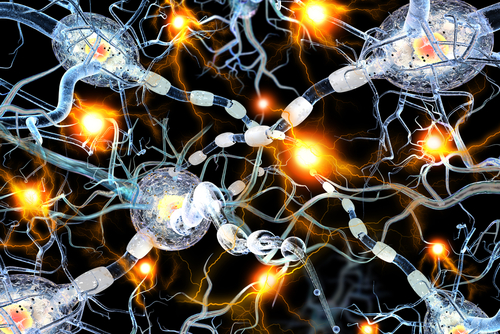Gene Seen to Protect Motor Neurons May Serve as ALS and SMA Therapy, Study Suggests

The protein synaptotagmin 13 (SYT13) protected motor neurons from degeneration in cell and animal models of amyotrophic lateral sclerosis (ALS) and spinal muscular atrophy (SMA), a study reports, suggesting a gene therapy based on this protein’s related gene, SYT13, would treat these and other diseases of motor nerve cells.
The study, “Synaptotagmin 13 is neuroprotective across motor neuron diseases,” was published in Acta Neuropathologica.
Both ALS and SMA are characterized by the death of motor neurons, the nerve cells that control movement. But not all motor neurons are equally affected.
In both disorders, for instance, neurons that control eye movement (called oculomotor neurons, or OMNs) remain resilient even in very late disease stages. This suggests that factors intrinsic to these neurons protect them against damage and death, regardless of the disease’s underlying cause.
Researchers at the Karolinska Institutet in Sweden and the University of Milan analyzed previously published data on rodent gene expression, the process by which information in a gene is synthesized to create working products like proteins.
They compared genes expressed in OMNs to those expressed in neurons more susceptible to cell death, and identified 24 genes that significantly differed in how they were expressed between oculomotor neurons and other motor nerve cells.
SYT13 was among the genes identified, and found to be strongly activated in OMNs but less so in vulnerable spinal motor neurons, whose loss marks neurodegenerative diseases like ALS and SMA.
The function of the SYT13 protein is not very well characterized, but it is thought to be involved in the movement of vesicles (small membrane-bound sacs carrying cellular components) within cells. Vesticles are important to neuronal health and function, as their work includes the transport of proteins.
The team decided to investigate the SYT13 gene in greater detail, analyzing its expression in tissues donated after death by people with or without ALS.
This gene was found to be more highly expressed in oculomotor neurons than in motor neurons of the spinal cord, supporting the rodent analysis. Importantly, SYT13 expression was significantly higher in OMNs and surviving motor neurons of tissues taken from ALS patients than in tissues from people without the disease.
“Taken together,” the researchers wrote, “these data clearly show that SYT13 expression is preferential to resistant OMNs, as well as relatively resilient spinal motor neurons remaining in end-stage ALS patient tissues, suggesting that SYT13 could play a beneficial role in these cells.”
The researchers then engineered ALS or SMA motor neurons to express higher-than-normal levels of the SYT13 protein. These lab cells had significantly better survival rates than did cells without extra SYT13, further supporting its protective effect.
Further experiments suggested this was due to factors that include a reduction in the natural process of programmed cell death (apoptosis) and lesser endoplasmic reticulum (ER) stress, a kind of stress response to defective protein production in cells.
Mouse models of both ALS and SMA were then studied. In both models, mice were treated with a viral vector encoding the SYT13 gene; this vector, an effective transport vehicle often used in gene therapies, delivered the gene to motor neurons in the spinal cord. An empty viral vector (one lacking the SYT13 gene) was given other mice serving as controls.
In both the ALS and SMA mice, the SYT13 gene therapy significantly improved motor neuron survival compared to control mice. SYT13-treated mice also lived longer: a median of 20 more days (14%) in ALS mice, and of six days (50%) in SMA mice.
“Our results suggest that SYT13 is a very promising gene therapy candidate for patients with motor neuron disease,” Monica Nizzardo, a study co-author and researcher at the University of Milan, said in a press release.
These data also suggest that the protective effects of SYT13 are intrinsic to neurons. That is, protection is conferred regardless of the underlying cause of the disease that damages and kills motor nerve cells.
“This is extremely useful from a therapeutic perspective, since the mechanisms behind neuronal loss are largely unknown in 90 per cent of all ALS patients and can differ from one individual to another,” said Eva Hedlund, a Karolinska Institutet researcher and study co-author.
Benefits that are potentially independent of disease cause also opens the possibility that SYT13-based therapies could be used with disease-specific ALS and SMA treatments, and may treat other disorders where motor neurons die off.
This study serves as a proof-of-concept for a strategy of identifying factors that intrinsically promote neuronal survival as a means of finding new therapeutic targets for motor neuron diseases. Future studies may identify other factors with similar properties that could apply to treatment development.
“We’ll continue looking for additional factors that are unique to resistant motor neurons, and thus identify more potential therapeutic targets,” Hedlund said.






